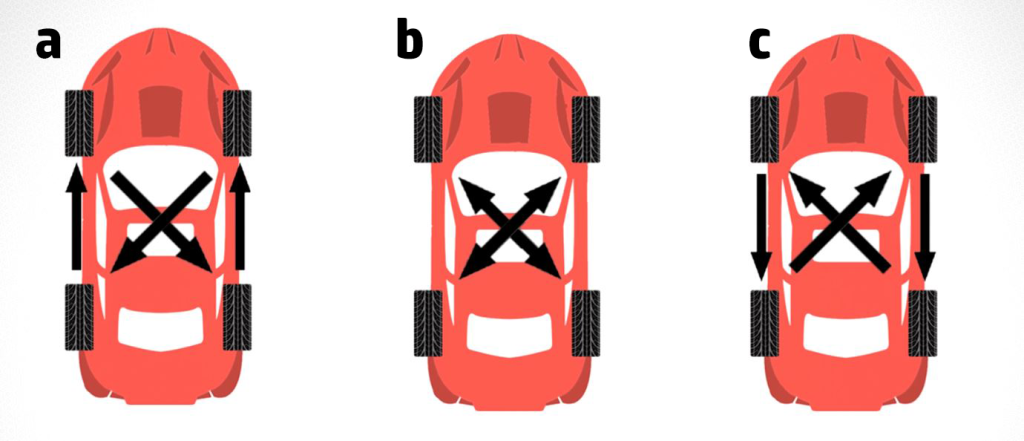Tire Rotations: What Are the Benefits?
Tire rotations are often mentioned in the realm of vehicle maintenance, yet their significance remains unclear to many. However, when performed on a regular basis, tire rotations prove to be a simple yet effective method to extend the lifespan of your tires. Moreover, rotations can be conveniently carried out alongside routine maintenance tasks such as oil changes and tire changeovers. In this guide, we will delve into the essence of tire rotations and shed light on their necessity.
Why Does Tread Wear Unevenly?
Tread wear can occur unevenly due to a multitude of reasons, both simple and complex. The most common cause is the fact that the tires on your drive axle bear the responsibility of transmitting power from the drive train, propelling your vehicle forward. Consequently, these tires tend to experience faster wear.
For instance, in a front-wheel drive vehicle, the front tires are more susceptible to greater wear compared to the rear ones. It is important to note that even all-wheel drive and 4×4 vehicles are not exempt from this phenomenon, as the tires nearest to the transfer case endure more strain than the others. Another contributing factor is the constant scrubbing and lateral forces exerted on the steer-axle tires (typically the front tires) while steering and making directional corrections during driving.
As the suspension components wear out or the alignment goes out of spec, tire wear becomes uneven. While it is crucial to address these underlying problems, regular tire rotations effectively distribute the impact of these issues across all tires, preventing excessive wear on any particular tire.
What Is A Rotation?
Put simply, tire rotations involve the process of interchanging the position of your vehicle’s tires in order to achieve an even tread wear across the entire set. During a tire rotation, a technician will meticulously rearrange the tires in different patterns, based on factors like wear patterns, the type of drive train, and various other considerations. Typically, it is recommended to have tire rotations performed approximately every 8,000 kilometers. However, the optimal frequency may vary depending on factors such as tire type, vehicle condition, and individual driving habits.
The fundamental aspect of a tire rotation usually involves moving the rear tires to the front and vice versa, while also changing the side of the vehicle where each tire is mounted. This simple yet strategic maneuver helps to promote balanced wear among all the tires.

The Benefits
Regular tire rotations offer multiple benefits, including but not limited to:
- Extended Tire Life: Since front and rear tires often experience different levels of wear due to variations in weight distribution and steering forces, rotating them helps equalize the wear. This leads to extended tire life and ensures that all tires wear out at a similar rate.
- Improved Traction and Handling: Unevenly worn tires can negatively impact a vehicle’s traction and handling capabilities. By rotating the tires regularly, you maintain more consistent tread depth across all tires, enhancing traction and improving the vehicle’s overall handling characteristics. This is particularly important for vehicles with front-wheel or rear-wheel drive.
- Enhanced Performance and Safety: Worn tires with uneven tread patterns can compromise a vehicle’s performance and safety. Regular rotations help maintain optimal tire performance by preventing excessive wear on specific areas of the tires. This improves braking efficiency, stability, and responsiveness, contributing to a safer driving experience.
- Maximizing Tire Warranty: Many tire manufacturers provide warranties that cover premature wear under specific conditions. Regular tire rotations are often a requirement to uphold these warranties. By adhering to the recommended rotation intervals, you ensure that your tires meet the manufacturer’s guidelines, potentially protecting your investment in case of any warranty claims.
- Cost Savings: Since tire rotations help equalize tire wear, they can save you money in the long run. By extending the life of your tires and ensuring even wear, you delay the need for expensive tire replacements. This cost-effective maintenance practice can help you get the most out of your tires and improve overall vehicle ownership costs.
It is advisable to follow the vehicle manufacturer’s recommendations regarding rotation intervals to maximize these advantages and maintain optimal tire performance.

